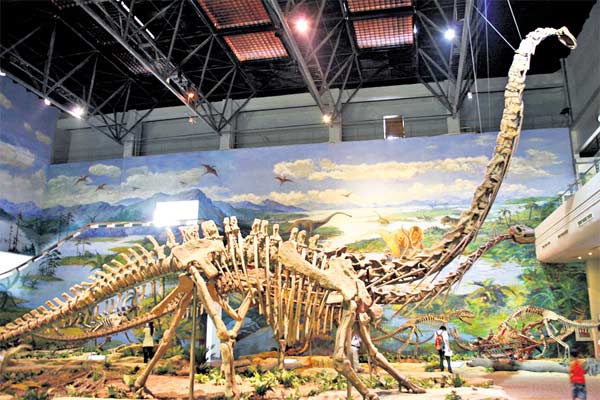Millions of years ago, Dinosaurs dominated Earth, and even though these species are extinct now, their fossil remains continue to give a glimpse of the world gone by. Palaeontologists have continuously been digging up exciting new evidence in a relentless pursuit to understand such lost species.
To date, each fossil obtained has something new to add to the ever-growing knowledge about these gigantic creatures. The latest addition is how one of the largest species of the dinosaur family, named Sauropods, evolved to have long necks.
The giant vegans
Sauropods are regarded as the first group of herbivorous dinosaurs, which existed from Late Triassic to Late Cretaceous. These giant beasts were as tall as 40 metres with a weight of 80 tonnes i.e., 14 times more than that of an African elephant.
The recent study highlights that this family of dinosaurs was not always this huge, especially in the first 50 million years. During this period, the Sauropods were diverse, with some having a height of 10 metres with not so long necks—equivalent to the size of a goat. Also, these dinosaurs had slender teeth, which fed on soft vegetation.
The Jurassic period started from 201.3 million years ago and lasted till 145 million years ago. At the end of the early Jurassic period, some 180 million years ago, these diverse small dinosaur species started to disappear.
Change of environment
The study suggests the transformation was mainly due to the massive volcanic eruptions in the Southern Hemisphere around 180 million years ago that resulted in the change in climatic conditions.As per the study, these changes led to widespread changes in vegetation pattern.
Together, a changed surrounding environment led to the disappearance of a wide range of sauropods species and only the huge ones were able to adapt and survive in the new environment after the massive volcanic eruption.
These particular species, evolved after the volcanic eruption, are referred to as Eusauropods. The fossils recovered from the site show that massive volcanic eruptions made the globe relatively warm and arid due to excessive emissions of greenhouse gases. Such climate supported the growth of large tall conifer trees.
Eating habits
The enamel teeth discovered from Patagonia also highlights that the dinosaurs were easily able to eat hard vegetation. The teeth were found to be 7 times thicker than the other herbivores which existed before them.
These animals also had large digestive chambers through which they were easily able to digest the harsh diet. The adaptation to the vegetation enabled the dinosaurs to become so gigantic.
Now you can get handpicked stories from Telangana Today on Telegram everyday. Click the link to subscribe.
Click to follow Telangana Today Facebook page and Twitter .

